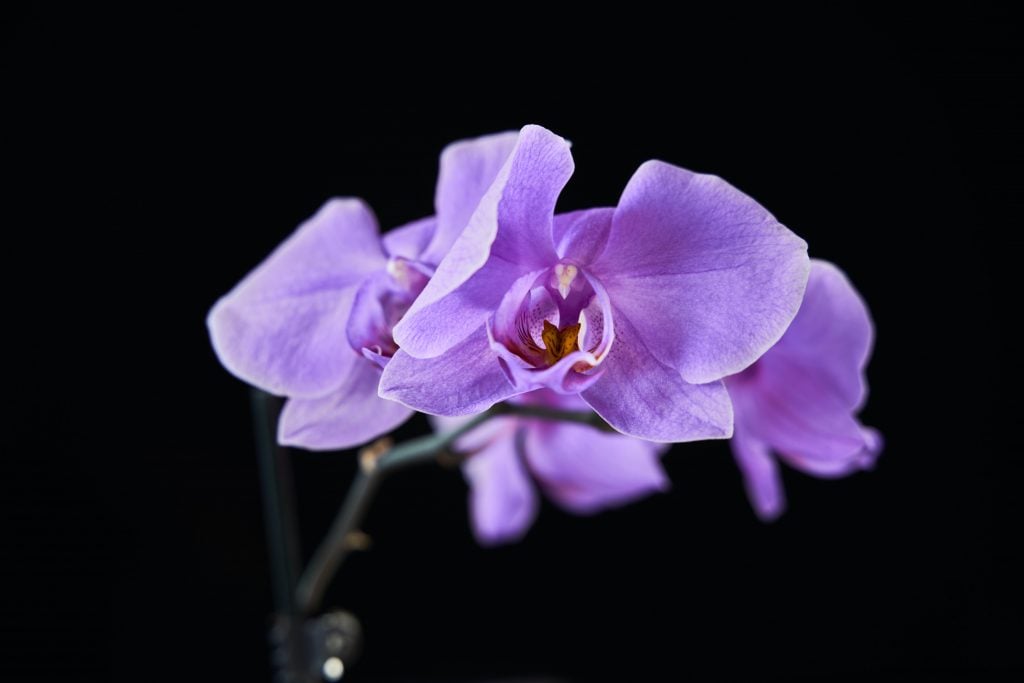Table of Contents
If you are a gardener and fond of having fascinating plant collections, consider growing an ‘honesty plant‘ or Lunaria annua in your garden. This famous beauty can give you the title of “coolest gardener. Honesty plants, or silver dollar plants, are super succulent with their glowy, coin-like fruits.
This is a flowering plant belonging to the Brassicaceae family. Though the plant is native to Balkan Peninsula and southwest Asia, temperate areas worldwide have seen a huge growth of this plant since its naturalisation. Honesty plants are ideal for ornamentation when dried, but learning Lunaria’ honesty plant’ care & growing tips can surely give your landscape an alluring look.
Whether your garden is simple or full of exotic flowers, this plant should be on your list for the next plantation. Continue reading the guide to learn how to grow and care for this distinctive plant.
Overview of The Honesty Plant
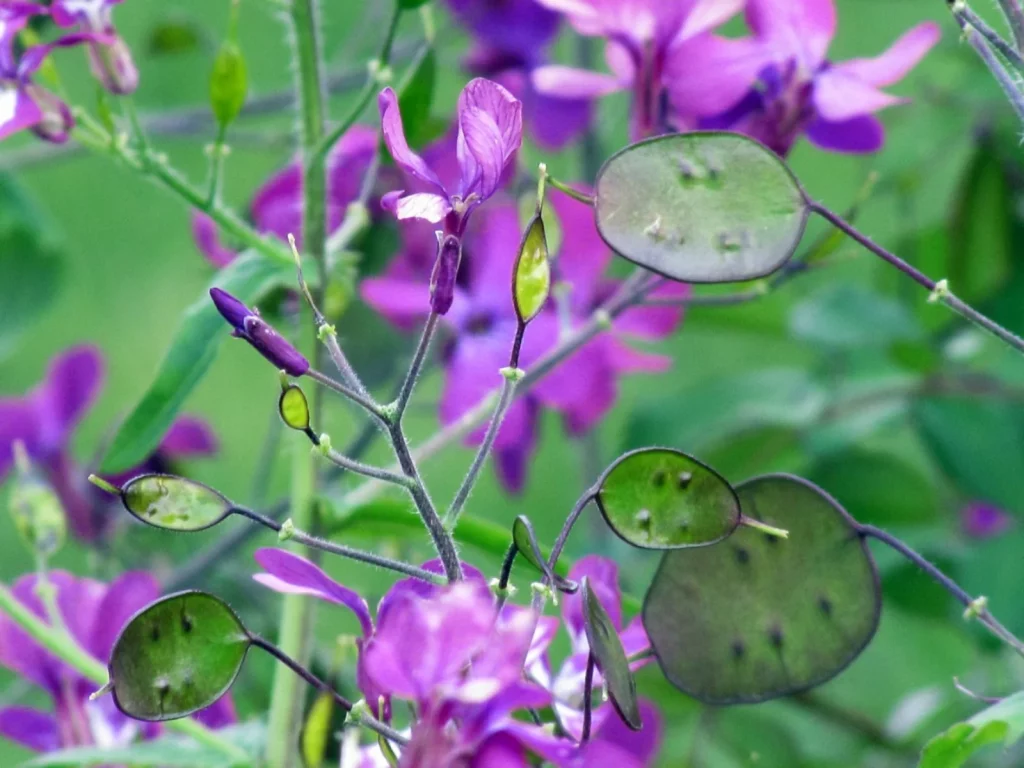
In the plant kingdom, there are two types of Honesty flowers. One is Lunaria annua, and the other is Lunaria rediviva. The first one is the biennial type, and the second one is the perennial type. This plant has many common names, like money, silver dollar, moonwort, and Honesty.
The blooms of these plants develop fragrant flowers. Lunaria’ honesty plant’ care & growing tips help you to understand that flowering usually takes place in mid-late spring to early summer. From deep purple to white, these plants are great for their ornamental arrangements. However, the flowers vary in colour based on the variety. Some varieties even have flowers with a purple tint. When they fade in early summer, they get replaced with coin-shaped seed pods. These seed pods are translucent. The seeds start green and then turn to earthy brown colour when dry. You can see oval- to heart-shaped foliage with zigzag edges and pointed tips.
Tips on Growing Honesty Plants
Honesty plants will be a constant in your garden if you care for them well. These flowering plants do not demand too much to grow. If you manage and maintain the environmental conditions according to their native habitat, growing the honesty plant will be everyone’s cup of tea. They are extremely easygoing and unchallenging to grow.
Below all the factors are listed that could give your Honesty an ideal environmental state to grow naturally.
1. Plantation
Though Honesty is a self-seeding plant, Lunaria’ honesty plant’ care & growing tips help you to grow them easily from seeds or young plants. Bow them in pots, check the soil, temperature, climate, water, and humidity is okay for their growth and then transplant them into larger pots. Since the honesty plant is a biennial with a large taproot, it is best planted when young because older plants tend to establish more quickly than younger ones.
2. Propagation
This is a plant that self-seeds. If you usually don’t cut the seed pods, they can grow easily. However, cutting and storing the seeds for propagation is also very common. Try to pot them in early summer to grow in autumn and start flowering in the coming spring.
3. Lighting Requirements
Where there are the right rowing conditions, Lunaria’ honesty plant’ care & growing tips let you know that. Honesty turns out to be a beautiful flowering plant. Your plant needs both; full sun exposure to partial sun. But, in hot summer it is suggested to provide them with some shade. Eight hours of sunlight is enough to grow the strong stems of this plant with a sturdy root for flowers. Though they are tolerant to high temperatures, in extremely hot weather, try to protect them.
4. Soil Profile
The best soil type to grow Lunaria annua is fertile, moist and well-drained, slightly alkaline soil. They are good to grow outdoors. Also, choose a spot that is both sunny and partially shaded.
5. Watering
If you want to grow Honesty flowers, don’t overwater them. Extremely overwatered and well-drained soil can lead to rotted roots. Ensure the plant gets a lot of moisture for healthy growth. Over the years, Lurania is developing well in most gardens with just damp soil. Though how much watering is needed depends on the climate. They need more water throughout the spring and summer seasons than in winter and rain.
6. Temperature and Humidity
Don’t keep them in direct sunlight, and avoid overwatering. Lunaria’ honesty plant’ care & growing tips let you know that they can resist low temperatures, but 60° to 70° Fahrenheit warmth is ideal for proper germination of new plants. Once grown, the plant can adjust to different temperatures and humidity levels, especially if you are growing them in USDA zones 4 to 8. Do not worry, though! The temperature matters only during their first season of growth, spring.
7. Pruning
Just because it is a low-nurturing plant, frequent cutting is not required. But, if you want to control the self-seeding seedlings, a little bit of pruning can prevent growth. You can store and use the seeds for different arrangements once dried. Or else, you can plant them again.
When you want to sow the plant, it is suggested to learn Lunaria’ honesty plant’ care & growing tips. Cut the stems towards the base and take them indoors. You can gather the cuttings making it a bundle, and keep it in a low-humidity space.
Interesting Facts About ‘Honesty Plants’
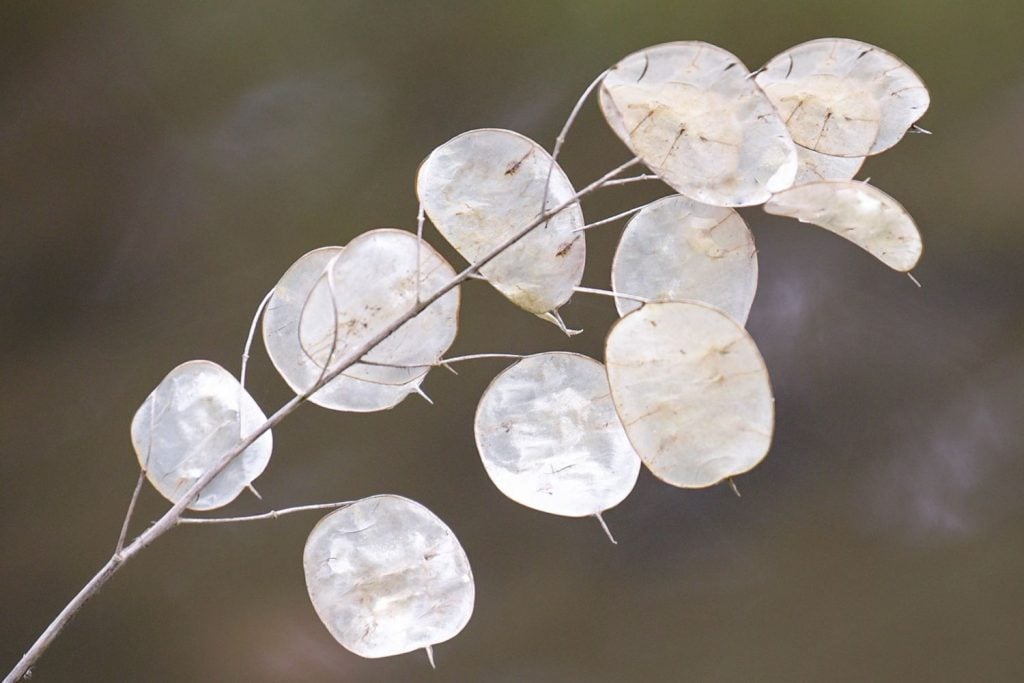
The genus name “Lunaria” comes from the Latin word for “moon-shaped.” It is named so because of the late fruits. The common name “Honesty” also refers to the translucence of their fruit membranes. These plant species, the L. annua var. albiflora and L. alba var. albiflora ‘Alba Variegata’, grows lovely blossoms and silvery fruits. Both species have received a garden merit award from the Royal Horticultural Society.
People who are passionate about witchcraft consider Lunaria Annua a protective plant. They believe this plant can keep you safe from evil monsters or spirits. Flat, ripe fruit pods resembling coins bring prosperity and wealth home. According to the flower language, Honesty and money are symbolised by Lunaria Annua. This plant is highly attractive to wildlife. The beautifully fragrant flowers are extremely catchy to butterflies, bees, flies, and moths. The blooms are used for both edible and decorative purposes. With Lunaria’ honesty plant’ care & growing tips, you can realise the peeled root of this plant is also edible. Furthermore, Honesty seeds taste like mustard. Some people blend the seeds with water to add the taste of mustard to recipes. This plant is completely safe for humans and pets, so you don’t need to worry if they are touched or inhaled. Without any worries, you can grow them in your garden.
Features of Honesty Plant
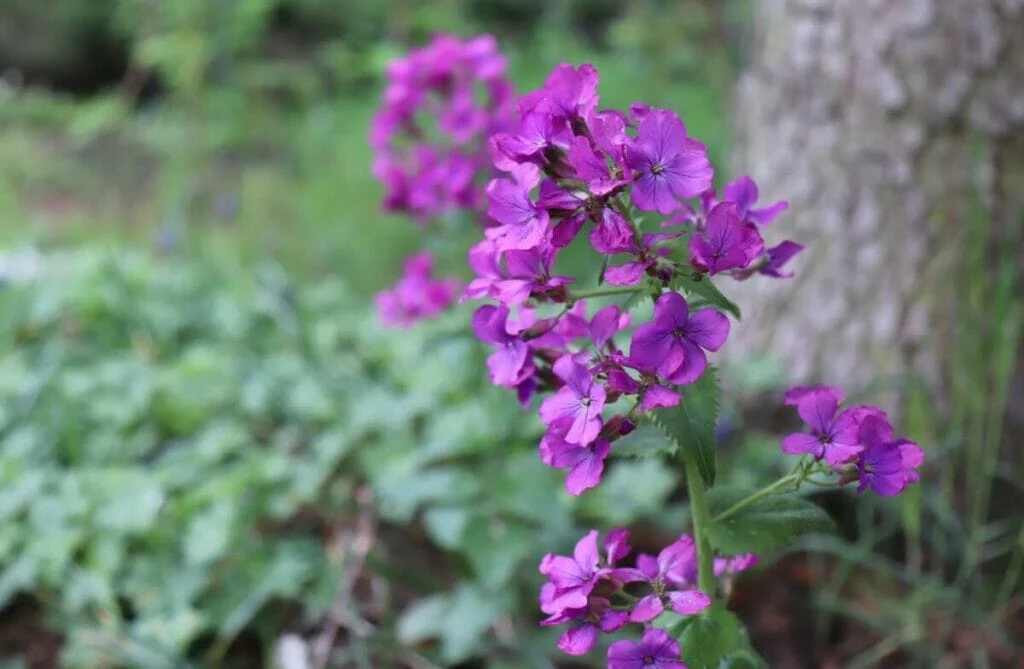
This plant comes under the Lunaria genus, which has four flowering plants. L. elongata, L. rediviva, and L. telekiana are also some of the species that belong here. Both annual and biennial types of honesty plant height could reach up to 2 to 3 feet (60-90 cm). They are 1 to 2 feet (30-60 cm) in width. They are usually one of the fastest-growing plants.
Large, pointed, hairy, coarse, oval-shaped, and green leaves are present with zigzag edges. Whereas the lower leaves appear on long stalks, the upper ones are stalkless. There are variegated leaves in different varieties. Lunaria’ honesty plant’ care & growing tips let you acknowledge these varieties too. Honesty plants usually bloom from mid-late spring through summer.
At this time, their raceme inflorescences lead to the growth of different 4-petaled flowers of shades like purple, white, and rarely pink. Fruits are one of the most interesting features of Honesty plants. After the flowering season ends, these plants start bearing fruits called silicles. These translucent, disc-shaped, and green silicles turn light brown over time. To release the seeds, dry and ripe silicles typically shed their exterior valves. But the silvery central membranes remain as it is even after this process and throughout the winters. They are 1 to 3 inches (3-8 cm) in diameter.
Common Pests and Diseases Affecting Honesty Plants
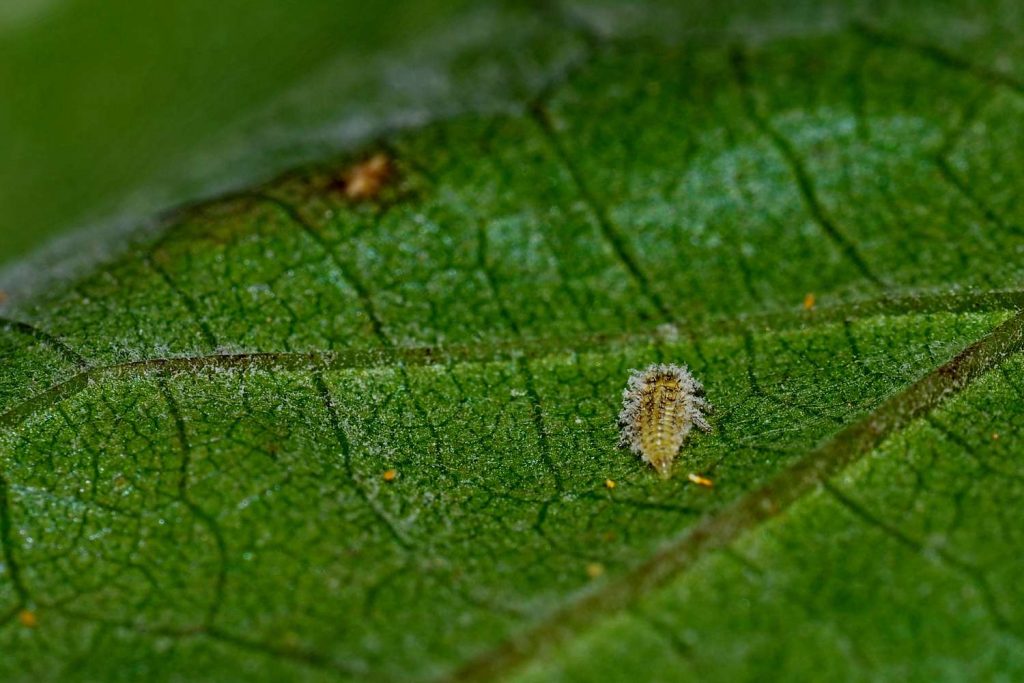
As this plant comes under the Brassicaceae family, it is also easily affected by pests and diseases, as are many cabbages. Some of the common problems are fungus diseases and club roots. As a result, distorted roots appear and then stop the growth of the upper portion.
With Lunaria’ honesty plant’ care & growing tips, you can understand these don’t need much maintenance. However, pest issues are common. For example, aphids, neem oil, or insecticidal soap are great ways to deal with them. Grey to black leaves resulting from septoria leaf spot is also a common fungal disease. It is advisable to remove the infected parts for better growth. Because of club root diseases, leaves turn yellow; however, infected leaves must be removed.
What Types of Varieties Do Honesty Plants Have?
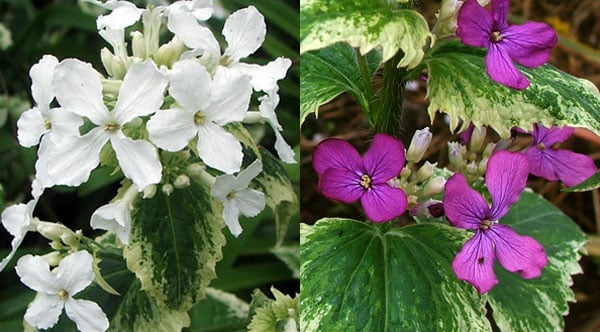
- Lunaria annua ‘Chedglow’: With lovely brownish leaves and lavender flowers, this species is a must-have in your garden. Usually, the plant grows up to 1m in height. Full of nectar, these flowers attract bees, butterflies, moths, and caterpillars.
- Lunaria annua var. albiflora: This specimen has earned the renowned RHS Garden Merit (AGM) Award. Its beautifully vast white flowers and attractive seed pods are gorgeous.
- Lunaria rediviva: This is a perennial variety. It turns to a height of 90 cm and has light-coloured lavender flowers. An aroma and good seed heads are features of these plants.
- Lunaria annua’ Alba Variegata’: This beautiful species has white flowers with cordiform leaves and creamy borders. It is a biennial type that grows up to 60 cm. Compared to others, this tree is small.
Summing It Up
Hopefully, you have learned why honesty plants are a must-have in your garden. Especially when you are a young gardener passionate about planting lovely flowering plants, this easy-to-grow Honesty plant can add value to your garden’s resources.
Compared to others, Lunaria’ honesty plant’ care & growing tips could do wonders for you. Because they are extremely native to different climatic conditions, you can use them to your advantage and grow them well. Proper lighting conditions, temperatures, soil, moisture, and voila! You will be extremely pleased with the results; your new garden member!
Their beautiful colour and fastest-growing features are not only very interesting to nurture, but you will also love their overall appearance!
Frequently Asked Questions
Are Honesty Plants Easy to Grow Indoors?
Honesty plants are extremely easy to grow indoors. If you give them enough moisture and all the climatic conditions are maintained properly, Honesty can result in a huge flowering. They need organically rich soil and full and partial sun exposure. You can sow the seeds outdoors in early summer, and then, until spring, you can get saplings. These saplings can be nurtured indoors under favourable conditions.
How Much Time Do Honesty Plants Take to Grow?
Honesty is one of the fastest-growing plants. If you plant the saplings in spring, you can see them growing fast, and if it gets all the favourable climatic conditions, the chances are higher that you will see seedlings in just 14 days. Though this plant is highly resistant to different temperatures, you must maintain the balance for good growth.
From Where Can You Buy Lunaria Plant Seedlings?
You can easily buy Lunaria plant seedlings from any nursery and different gardening centres. There are different online stores too that sell these plant seedlings. If you are looking for any particular species or varieties, there is an 80% chance that you can buy the seedlings from e-commerce sites.

